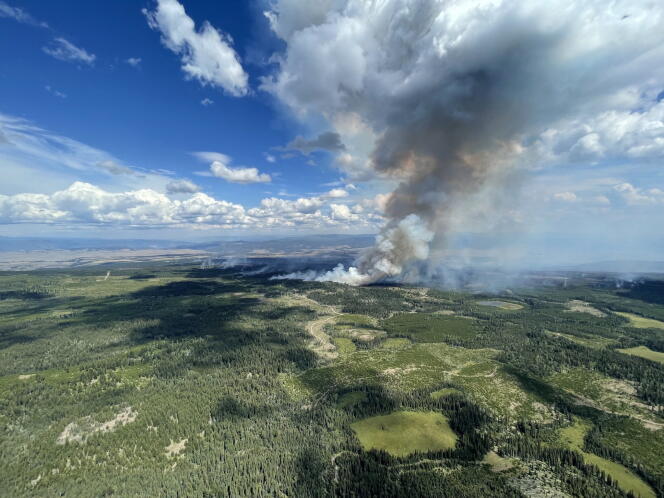


Canada's forests are far from out of the woods: From east to west, they continue to be beset by fires, and the fire season is intensifying on the Pacific coast. On a national scale, the figures are mind-boggling, with 13 million hectares (an area the size of Greece) already burnt since the start of the year. This is twice the previous record of 7.3 million hectares, set in 1989. And the carbon emissions associated with these Canadian fires have also far surpassed those of previous years: According to the European climate monitoring service Copernicus, they have already reached 290 metric megatons of CO2 (compared with the previous record of 138 megatons in 2014).
On the west coast, fires in British Columbia are set to intensify between now and the end of the month. In this province, where 353 fires are still burning, 154 of which are out of control, one charred hectare in three is attributable to the Donnie Creek megafire. This blaze of almost 6,000 km2 is scorching the foothills of the Rocky Mountains. "A fire of this type can continue to burn despite rain and snow, remain alight underground all winter and pick up again in the spring," said Professor Michael Flannigan, a forest fire specialist at Thompson Rivers University in British Columbia.
Several hundred kilometers to the south, another fire has crossed the US border from Washington State, and is now eating away at the hills above the small town of Osoyoos. The impressive images show huge lava-colored plumes glowing above the buildings and reflecting in the waters of the lake of the same name.
"Fires are an integral part of the boreal ecosystem, as they allow forests to regenerate," said Northwest Territories information officer Mike Westwick. "But the number of fires is exceptional." In this region of Canada's far north, several First Nations communities have had to be evacuated, and a fire eating away at the outskirts of Yellowknife, the provincial capital, is worrying the authorities. Exceptionally, after the taiga, the tundra has also caught fire. "This kind of event could become more common as climate change intensifies," said Westwick.
In Alberta, the progress of the fires has stabilized thanks to the rain. In neighboring Ontario, firefighters can rely on "a vast network of lakes and rivers," said Alison Bezubiak, spokesperson for the Ontario fire management agency. The sky, however, is filled with smoke from fires in western Canada.
The wind exacerbates the still-active blazes. "It blows at speeds of up to 25 km/h, drying out the moisture accumulated by plants after infrequent showers," said Jérôme Crête, an officer with SOPFEU, the forest fire brigade. Watching over Quebec's biggest fire with 300 fellow firefighters, he has noticed a decrease in morning fog, which is essential for cooling the northern forests in the grip of the flames. "Combined with wind and rising temperatures, aridity is one of the main factors in the worsening of fires," said Flannigan.
You have 26.85% of this article left to read. The rest is for subscribers only.
